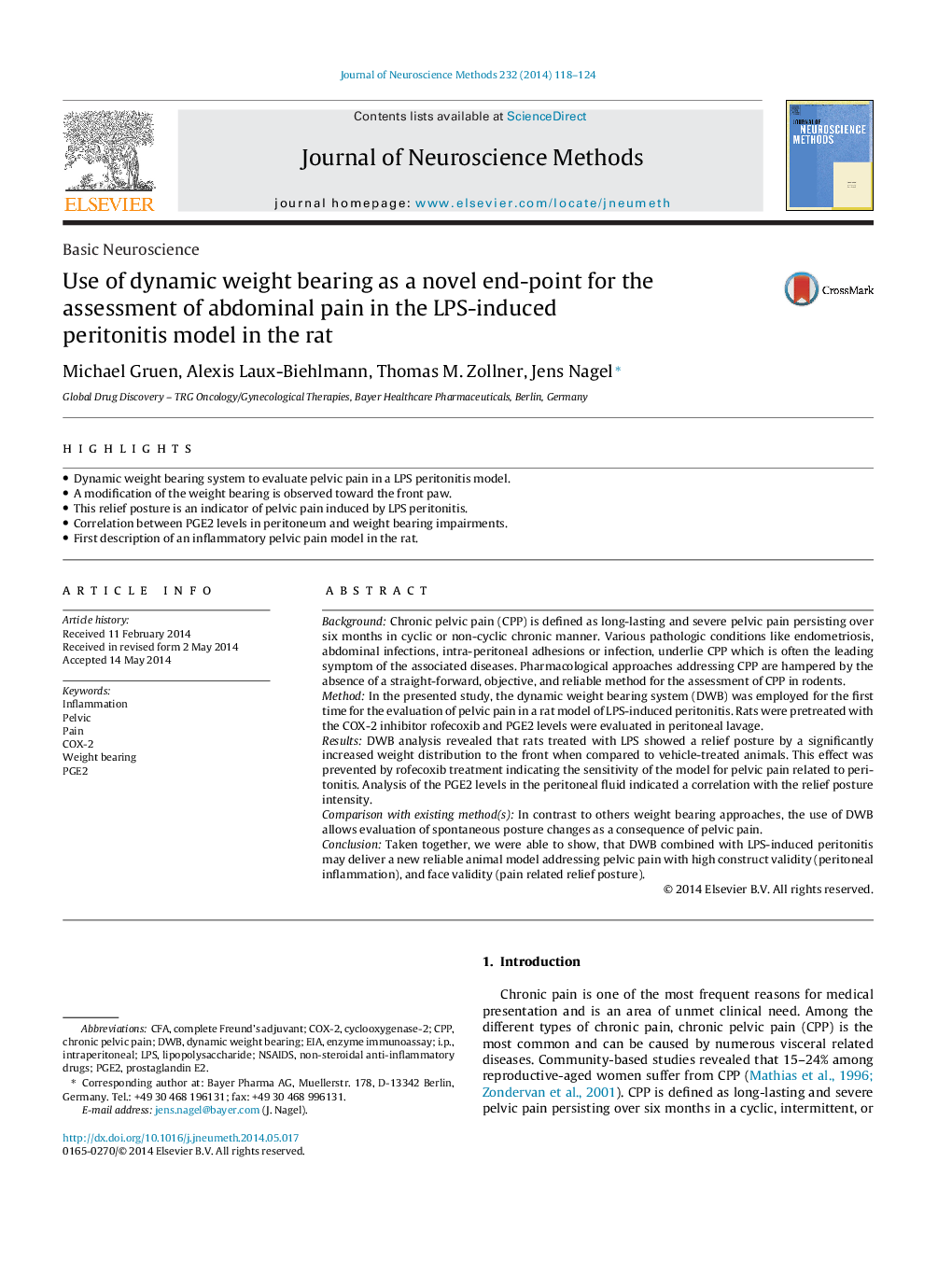| کد مقاله | کد نشریه | سال انتشار | مقاله انگلیسی | نسخه تمام متن |
|---|---|---|---|---|
| 6268683 | 1614637 | 2014 | 7 صفحه PDF | دانلود رایگان |

- Dynamic weight bearing system to evaluate pelvic pain in a LPS peritonitis model.
- A modification of the weight bearing is observed toward the front paw.
- This relief posture is an indicator of pelvic pain induced by LPS peritonitis.
- Correlation between PGE2 levels in peritoneum and weight bearing impairments.
- First description of an inflammatory pelvic pain model in the rat.
BackgroundChronic pelvic pain (CPP) is defined as long-lasting and severe pelvic pain persisting over six months in cyclic or non-cyclic chronic manner. Various pathologic conditions like endometriosis, abdominal infections, intra-peritoneal adhesions or infection, underlie CPP which is often the leading symptom of the associated diseases. Pharmacological approaches addressing CPP are hampered by the absence of a straight-forward, objective, and reliable method for the assessment of CPP in rodents.MethodIn the presented study, the dynamic weight bearing system (DWB) was employed for the first time for the evaluation of pelvic pain in a rat model of LPS-induced peritonitis. Rats were pretreated with the COX-2 inhibitor rofecoxib and PGE2 levels were evaluated in peritoneal lavage.ResultsDWB analysis revealed that rats treated with LPS showed a relief posture by a significantly increased weight distribution to the front when compared to vehicle-treated animals. This effect was prevented by rofecoxib treatment indicating the sensitivity of the model for pelvic pain related to peritonitis. Analysis of the PGE2 levels in the peritoneal fluid indicated a correlation with the relief posture intensity.Comparison with existing method(s)In contrast to others weight bearing approaches, the use of DWB allows evaluation of spontaneous posture changes as a consequence of pelvic pain.ConclusionTaken together, we were able to show, that DWB combined with LPS-induced peritonitis may deliver a new reliable animal model addressing pelvic pain with high construct validity (peritoneal inflammation), and face validity (pain related relief posture).
Journal: Journal of Neuroscience Methods - Volume 232, 30 July 2014, Pages 118-124